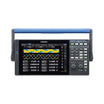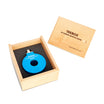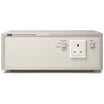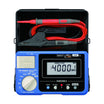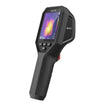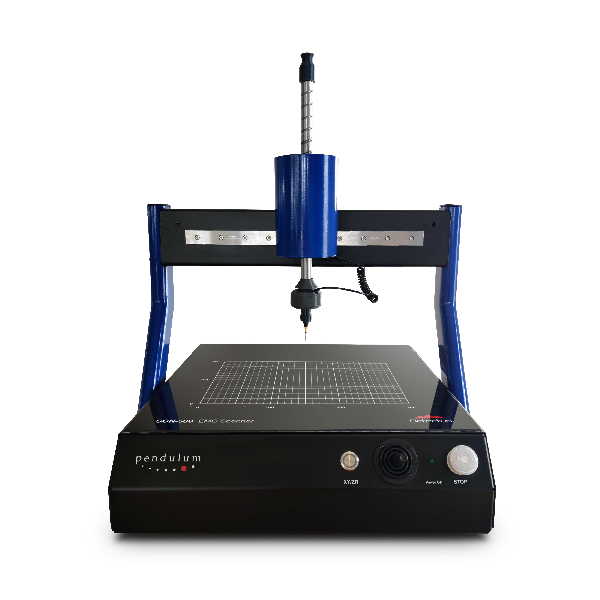
Detectus SCN series EMC Scanners with 2D, or 4D scanning
Use our chat for personal support or contact us via +45 31 33 18 19 or salg@GOmeasure.dk
Discover the possibilities
More information
Description
Detectus SCN series EMC Scanners with 2D, or 4D scanning
New industry standard for EMC scanning

High-resolution and affordable scanning
The SCN series comes in three different sizes to fit most DUTs and combine very-high scan resolution of 0.1 mm with probe head rotation, and the best-in-class scanning SW to deliver powerful visualization of the EMC test. For boards with components of substantially different heights, the optional laser distance meter will enable you to follow the DUT’s topography and measure at a fixed distance from the DUT, automatically creating a precise 3D-model of the DUT.
How do you perform EMC-scanning?
A complete scanner system consists of the EMC-Scanner Hardware package, the Detectus Scanning SW (DSS), a Spectrum Analyzer and a PC to run the scanner SW. Pendulum Instruments can supply everything if required, but normally the user already possesses a PC and a Spectrum Analyzer.
The test object is put on the coordinate board and a small near-field probe is moved in a controlled and repeatable path above the test object, registering the field strength. The probe output signal in every position is measured by the Spectrum Analyzer, and transferred to the scanner SW. The smart SW combines the spatial information (X,Y,Z) with the spectrum in that position, and presents detailed results.
Advantages of the Detectus SCN scanner
In R&D
Using the EMC-Scanner during the early stages of design enables you to detect potential emission and immunity problems before they become integrated into the product and expensive to correct.
If a product has failed a test at a test house, normally you only learn which frequency failed, not the location of the noise source. The EMC-Scanner can help you find the source, and repeated measurements while redesigning your product helps you lower the emission levels.
Similarly, if your problem was immunity, you can (optionally) scan for sensitive areas and repeat measurements while strengthening your product.
You can compare different design solutions and make comparative measurements of electromagnetic emissions.
In Q&A
The EMC-Scanner can help you maintain a high quality in the production line. You can make measurements on samples from the production line and easily compare them with a reference. That way you can make sure that, for example, a change of supplier of a component doesn’t affect the emission spectra in a negative way.
Leading Performance from the Detectus designers
With 0.1mm step size of the scanner, you can pinpoint emission sources in densely packed designs, at comparable cost to 1mm scanners
You can scan emissions up to 10 GHz, with the standard Pendulum Probe kits. If the user has near-field probes going up to higher frequencies, e.g. 70 GHz, then these can easily be attached and used for EMC-scanning. The SW has no limits, but you must of course use a Spectrum Analyzer that support the frequency range.
Within the Detectus SCN series you can choose from various sizes, to fit most test objects. The scan table comes in four basic sizes (WxDxH):
200×100 mm (2D scanning without Z-axis and probe rotation)
200x100x100 mm (4D = 3D scanning with probe rotation)
300x200x100 mm (4D = 3D scanning with probe rotation)
600x400x300 mm (4D = 3D scanning with probe rotation)
World class SW lets you SEE electromagnetic fields
The easy-to-use and feature-rich DSS SW let you measure and visualize the intensity and the location of a radiation source at a component level – or even inside a component. The results of such a measurement can be shown as two- or three-dimensional colored maps. The measurements can easily be repeated creating objective, comparative measurement results.
Measurements can be saved and later compared with board-level changes, thanks to the exact repetitive scanning. The SW even allows to subtract two scanning results to emphasize the true difference of any board layout – or component – change.
 Comparative measurements of EMI for six different IC de-coupling capacitor alternatives
Comparative measurements of EMI for six different IC de-coupling capacitor alternatives
Specifications
Documents
Detectus SCN series EMC Scanners with 2D, or 4D scanning
SCN datasheetOptions
Video
Detectus SCN series EMC Scanners with 2D, or 4D scanning
New industry standard for EMC scanning

High-resolution and affordable scanning
The SCN series comes in three different sizes to fit most DUTs and combine very-high scan resolution of 0.1 mm with probe head rotation, and the best-in-class scanning SW to deliver powerful visualization of the EMC test. For boards with components of substantially different heights, the optional laser distance meter will enable you to follow the DUT’s topography and measure at a fixed distance from the DUT, automatically creating a precise 3D-model of the DUT.
How do you perform EMC-scanning?
A complete scanner system consists of the EMC-Scanner Hardware package, the Detectus Scanning SW (DSS), a Spectrum Analyzer and a PC to run the scanner SW. Pendulum Instruments can supply everything if required, but normally the user already possesses a PC and a Spectrum Analyzer.
The test object is put on the coordinate board and a small near-field probe is moved in a controlled and repeatable path above the test object, registering the field strength. The probe output signal in every position is measured by the Spectrum Analyzer, and transferred to the scanner SW. The smart SW combines the spatial information (X,Y,Z) with the spectrum in that position, and presents detailed results.
Advantages of the Detectus SCN scanner
In R&D
Using the EMC-Scanner during the early stages of design enables you to detect potential emission and immunity problems before they become integrated into the product and expensive to correct.
If a product has failed a test at a test house, normally you only learn which frequency failed, not the location of the noise source. The EMC-Scanner can help you find the source, and repeated measurements while redesigning your product helps you lower the emission levels.
Similarly, if your problem was immunity, you can (optionally) scan for sensitive areas and repeat measurements while strengthening your product.
You can compare different design solutions and make comparative measurements of electromagnetic emissions.
In Q&A
The EMC-Scanner can help you maintain a high quality in the production line. You can make measurements on samples from the production line and easily compare them with a reference. That way you can make sure that, for example, a change of supplier of a component doesn’t affect the emission spectra in a negative way.
Leading Performance from the Detectus designers
With 0.1mm step size of the scanner, you can pinpoint emission sources in densely packed designs, at comparable cost to 1mm scanners
You can scan emissions up to 10 GHz, with the standard Pendulum Probe kits. If the user has near-field probes going up to higher frequencies, e.g. 70 GHz, then these can easily be attached and used for EMC-scanning. The SW has no limits, but you must of course use a Spectrum Analyzer that support the frequency range.
Within the Detectus SCN series you can choose from various sizes, to fit most test objects. The scan table comes in four basic sizes (WxDxH):
200×100 mm (2D scanning without Z-axis and probe rotation)
200x100x100 mm (4D = 3D scanning with probe rotation)
300x200x100 mm (4D = 3D scanning with probe rotation)
600x400x300 mm (4D = 3D scanning with probe rotation)
World class SW lets you SEE electromagnetic fields
The easy-to-use and feature-rich DSS SW let you measure and visualize the intensity and the location of a radiation source at a component level – or even inside a component. The results of such a measurement can be shown as two- or three-dimensional colored maps. The measurements can easily be repeated creating objective, comparative measurement results.
Measurements can be saved and later compared with board-level changes, thanks to the exact repetitive scanning. The SW even allows to subtract two scanning results to emphasize the true difference of any board layout – or component – change.
 Comparative measurements of EMI for six different IC de-coupling capacitor alternatives
Comparative measurements of EMI for six different IC de-coupling capacitor alternatives


